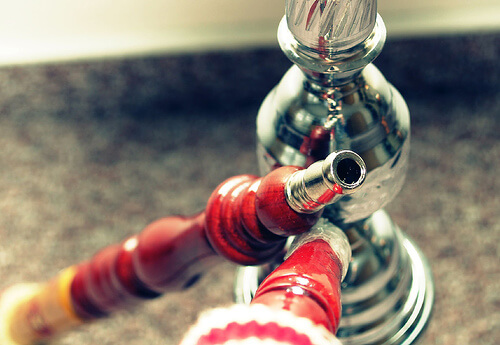In recent years I have witnessed a significant increase in waterpipe use. It is estimated that 2.3 million Americans smoke waterpipes. Up to 34% of 13-15 year-olds have tried it, and up to 20% of college students have smoked a waterpipe, which is also known as a hookah, hubble-bubble, shisha, or goza.
A new study “found that waterpipe smoking is associated with serious health problems affecting the head and neck region,” (Journal of the American Dental Association, October 2015, Vol 146 (10): 760-766, doi:10.1016/j.adaj.2015.04.014) according to study author Teja Munshi, BDS, MPH at Rutgers University. “Waterpipe smoking was found to be associated with gum disease, dry socket, oral cancer and esophageal cancer among other conditions”.
A waterpipe heats up special tobacco, often available in flavors such as strawberry, cotton candy, and spiced chai. That smoke makes its way through a pot of water in the pipe and is inhaled through a rubber hose with a mouthpiece. The level of nicotine in this tobacco is not currently regulated.
Because one waterpipe session can last up to 80 minutes, a smoker could take between 50-200 puffs, compared to cigarettes, which usually take 5-7 minutes to smoke and can be finished in 40-75 puffs. The World Health Organization found that “smoking a hookah is the equilalent of smoking 100 cigarettes, based on the duration and number of puffs in a smoking session”.
JADA editor Michael Glick, DMD, said that the “study sheds light on the common misconception that smoking from a waterpipe is somehow safer than smoking a cigarette. Whether you are smoking a cigarette, an e-cigarette, a cigar, or tobacco from a waterpipe, smoking is dangerous not only to your oral health but to your overall health.”
Photo by Jan Krömer 

